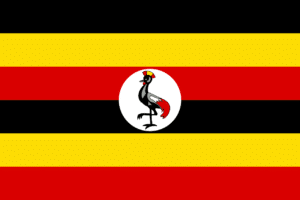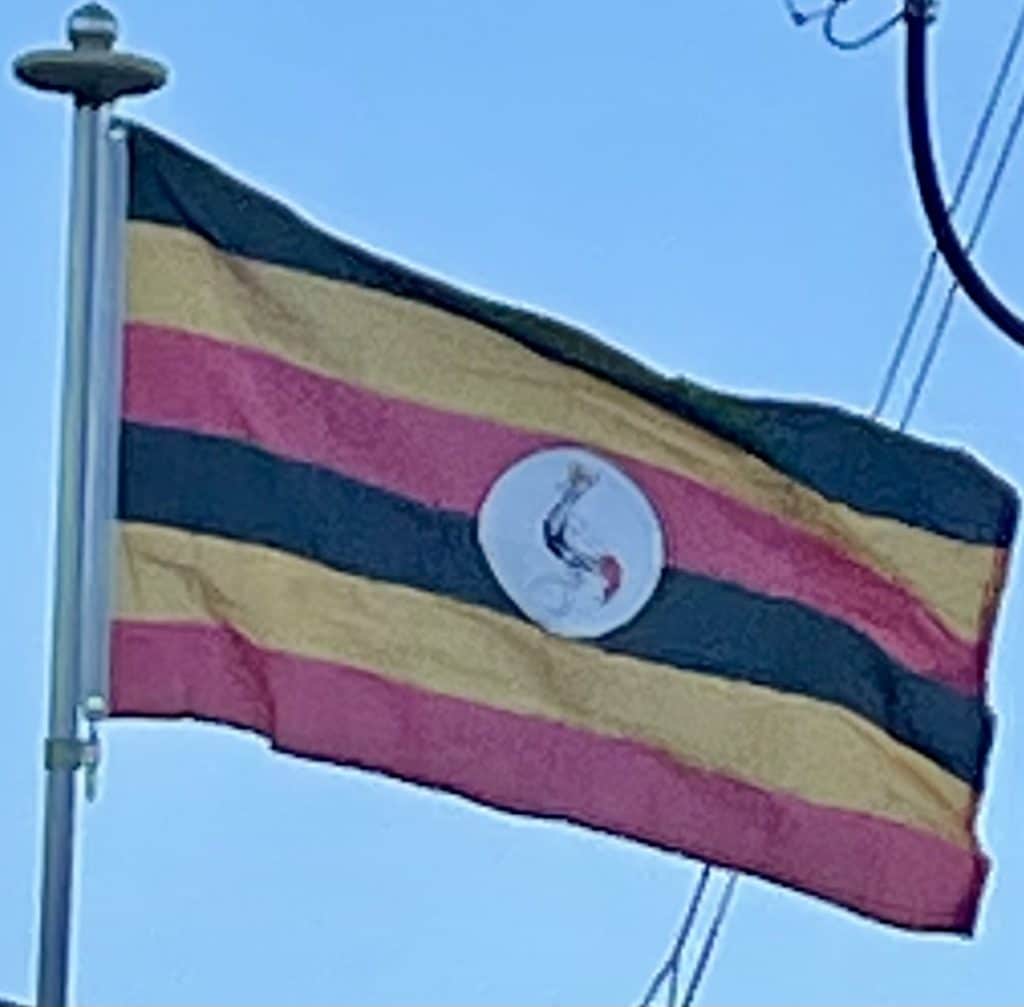
During the colonial era the British used a British Blue ensign defaced with the colonial badge, as prescribed in 1865 regulations. Buganda, the largest of the traditional kingdoms in the colony of Uganda, had its own flag. However, in order to avoid appearing to give preference to one region of the colony over any other, the British colonial authorities selected the crane emblem for use on the Blue ensign and other official banners.
When the Democratic Party ruled the country, a design for flag was proposed. It had vertical stripes of green-blue-green, separated by narrower yellow stripes, and in the center had the silhouette of a yellow crane. After the party lost the national elections on 25 April 1962 the newly elected Uganda People’s Congress (UPC) rejected the former design and instead proposed the current design. It was based on the flag of UPC – a tricolor having horizontal strips of red, yellow and black. The British administration gave their approval to this before the country’s independence. The flag was designed by C Todd, Professor of Fine Art at Makerere University. He also designed the Uganda Coat of Arms and various ceremonial items, which he registered with the College of Arms, in London.
The three colors are representative of Native ethnic groups of Africa (black), Africa’s sunshine (yellow), and African brotherhood (red being the color of blood, through which all Africans are connected). The grey crowned crane is fabled for its gentle nature and was also the military badge of Ugandan soldiers during British rule. The raised leg of the crane symbolizes the forward movement of the country.
